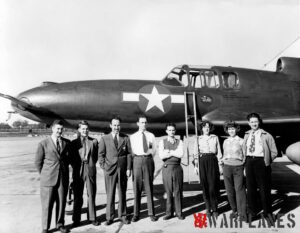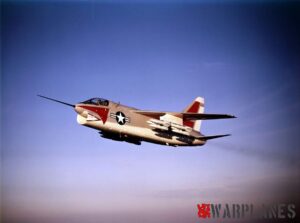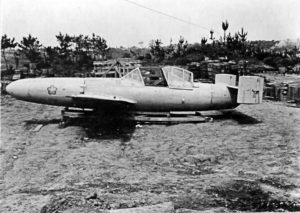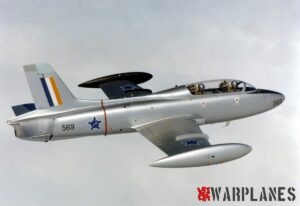US WW I failed fighter program
Much has been written about the failures of the American aircraft program in the First World War, most echoing the biased and distorted conclusions of the congressional and presidential investigations of 1918-1920. In recent decades several definitive-appearing and wel1-documented studies have perpetuated these misconceptions by analyzing only the planning and management of the program, concluding that Army mismanagement, control by the automotive industry, favoritism in placing orders, ignoring requests and direction from the American Expeditionary Force, substituting unsuitable engines in foreign designs, etc, were responsible for the program’s shortcomings. While these popular beliefs have some validity, their effect was minor and the real causes were much more obscure and often technical in nature, the reasons that very little about them is known today and that the program is still viewed in such a distorted way.
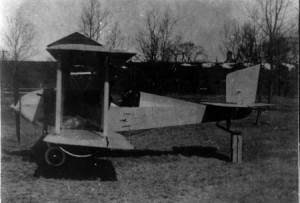 One of the more interesting questions concerning that effort is why the United States was unable to deliver any fighters to the AEF during the 19 months it was involved in the war. The answers can be found in the country’s dedication during the first three years of that conflict to not becoming involved, the absolute unprepared ness this had created in America when it entered the war, muddled guidance from the Allies, constantly changing directions from the American Expeditionary Force, and the technical problems requiring solution before fighter aircraft could be designed and produced. Most of the causes apply to the entire airplane production program.
One of the more interesting questions concerning that effort is why the United States was unable to deliver any fighters to the AEF during the 19 months it was involved in the war. The answers can be found in the country’s dedication during the first three years of that conflict to not becoming involved, the absolute unprepared ness this had created in America when it entered the war, muddled guidance from the Allies, constantly changing directions from the American Expeditionary Force, and the technical problems requiring solution before fighter aircraft could be designed and produced. Most of the causes apply to the entire airplane production program.
Although after the conflict began in Europe in 1914, it might seem that the Army’s long-term goal would be the development of a combat air service with its specialized airplanes similar to those fighting in France, this was not the case up to the declaration of war in April 1917. Since there was no intention of becoming involved in that conflict, the Army’s assignment was only to defend the country and its possessions against attack, requiring few of the types evolving in Europe. The only immediate enemies were the squabbling factions in Mexico.
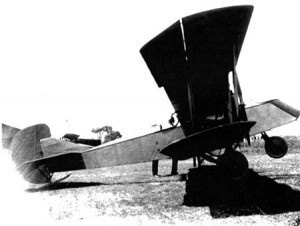 The Army had viewed its first airplane, the Wright Model A, Signal Corps No 1, as a possible means for the aerial scouting of enemy forces, and retained this simplified concept of the use of the airplane for some time after the war in Europe began. Congressional appropriations were so small that the Air Service only had one active squadron with about eight planes, and was barely able to replace normal attrition. Most machines obtained up to 1916 were trainers for use at the North Island school at San Diego, basically models developed by private companies with minor modifications to meet Army requirements. Even the JN-3s and R-4s used by the First Aero Squadron in Mexico that year were only observation machines to scout for the enemy, and had no standard offensive armament of any kind; nor was there a need for any.
The Army had viewed its first airplane, the Wright Model A, Signal Corps No 1, as a possible means for the aerial scouting of enemy forces, and retained this simplified concept of the use of the airplane for some time after the war in Europe began. Congressional appropriations were so small that the Air Service only had one active squadron with about eight planes, and was barely able to replace normal attrition. Most machines obtained up to 1916 were trainers for use at the North Island school at San Diego, basically models developed by private companies with minor modifications to meet Army requirements. Even the JN-3s and R-4s used by the First Aero Squadron in Mexico that year were only observation machines to scout for the enemy, and had no standard offensive armament of any kind; nor was there a need for any.
A few crude trials had been conducted since 1912 in firing a machine gun or dropping explosives from an airplane, but these were only isolated experiments, not a concerted plan to develop offensive airplanes. Because of American’s neutrality from 1914 to early 1917, even if there had been such a goal, the combatants were not about to provide technical information on rapidly advancing developments in Europe that could easily reach the enemy through the US. The United States was isolated and aviation funds were so limited that the country was quickly left in a Neanderthal age of military aircraft development.
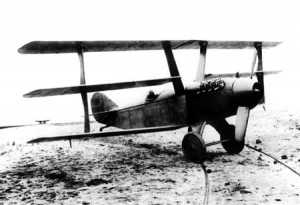 During 1915 and 1916, several companies developed private designs that they publicized as ‘battleplanes’ in hopes of an Air Service order, though the Army had no requirement for such a type and showed no interest. The designers lacked the background for such work, so these private ventures were only their impractical concepts of how to arm a plane.
During 1915 and 1916, several companies developed private designs that they publicized as ‘battleplanes’ in hopes of an Air Service order, though the Army had no requirement for such a type and showed no interest. The designers lacked the background for such work, so these private ventures were only their impractical concepts of how to arm a plane.
The Sturtevant Aeroplane Co near Boston, MA, built its Battleplane, a tractor biplane designed by its engineer, Grover Loening, and equipped with the company’s A-5 engine of 140hp. With several years’ experience developing and modifying machines at the Air Service’s North Island school, he was as capable as any designer in the country. The armament was to be two machine guns mounted in gunners’ nacelles perched on the lower wing on each side of the fuselage, outside the propeller arc. Although Loening later described it as “a fine, big two-seater with two gun turrets,” only dummy armament was ever installed; the machine had an unreliable engine and was impractical. Although flown by the company in December 1915, the Army justifiably ignored it.
 Another approach to the imaginary requirement was begun by the Thomas Brothers Aeroplane Company of Ithaca, NY, as its Model BP (Battle Plane) in early 1916. This huge design had a central nacelle for the three-man crew and a Thomas 135hp engine on each side, whose nacelles were extended back in long booms to support the tail assembly, similar to the Caproni bombers of the period. A gunner was in the nose and rear of the crew’s short nacelle, with the pilot located between. The wings spanned over 78 feet and the estimated speed was 89mph. The company began construction, but apparently never completed the prototype.
Another approach to the imaginary requirement was begun by the Thomas Brothers Aeroplane Company of Ithaca, NY, as its Model BP (Battle Plane) in early 1916. This huge design had a central nacelle for the three-man crew and a Thomas 135hp engine on each side, whose nacelles were extended back in long booms to support the tail assembly, similar to the Caproni bombers of the period. A gunner was in the nose and rear of the crew’s short nacelle, with the pilot located between. The wings spanned over 78 feet and the estimated speed was 89mph. The company began construction, but apparently never completed the prototype.
One of several similar types, the AS Heinrich design was a conventional twin-engine biplane built by the Atlantic Aircraft Company in 1916, loosely described as a ‘battleplane.’ The company obtained a ground-type Lewis machine gun which was placed on a pillar mount for the front crewman and was reportedly fired (in the air?) at Mineola, NY, but the demonstration had no military sanction.
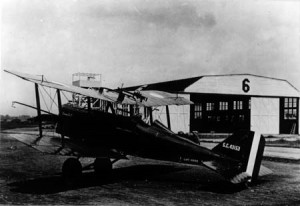 Also in early 1916, the Curtiss Aeroplane Company built an unarmed prototype Twin JN with two engines that others sometimes called a ‘battleplane 1. That spring, to enforce this aggressive image, it was displayed on the ground for Congress in Washington with a Davis cannon hastily stuck in the nose position. In October, influenced by the “preparedness” campaign gaining momentum in the country, the Army ordered six, powered by two 90hp OX-5 engines with the pilot behind the wings and an observer in the front cockpit, not as battleplanes for which it had no use, but as unarmed observation machines for the First and Third Aero Squadrons on the Mexican border. However, after the First Aero Squadron received its three, one was fitted with a flexible Lewis machine gun in the nose position, the only prewar installation of a gun by the Signal Corps on one of its service planes! It was probably intended for strafing bandits in Mexico, but the Twin JNs were unsuccessful and not used operationally on the border by either squadron.
Also in early 1916, the Curtiss Aeroplane Company built an unarmed prototype Twin JN with two engines that others sometimes called a ‘battleplane 1. That spring, to enforce this aggressive image, it was displayed on the ground for Congress in Washington with a Davis cannon hastily stuck in the nose position. In October, influenced by the “preparedness” campaign gaining momentum in the country, the Army ordered six, powered by two 90hp OX-5 engines with the pilot behind the wings and an observer in the front cockpit, not as battleplanes for which it had no use, but as unarmed observation machines for the First and Third Aero Squadrons on the Mexican border. However, after the First Aero Squadron received its three, one was fitted with a flexible Lewis machine gun in the nose position, the only prewar installation of a gun by the Signal Corps on one of its service planes! It was probably intended for strafing bandits in Mexico, but the Twin JNs were unsuccessful and not used operationally on the border by either squadron.
In England in about 1916, three ‘escort fighters’ which used similar approaches were completed. The Armstrong FK12 triplane had a gunner’s pod on each side like the Sturtevant design; the Sopwith LRTTr (also a triplane) had a streamlined gunner’s nacelle mounted high on the leading edge of its upper wing to shoot over the prop arc; and the Vickers FB11 biplane was fitted with one in the same position. All three resulted from experimental orders placed before gun synchronizers came into use, and were of no value when delivered; why they were completed is not known. It is difficult to confirm today, but it is doubtful wartime censorship would have allowed information on even these impractical machines to reach the US, particularly early enough to have influenced creation of the above American designs.
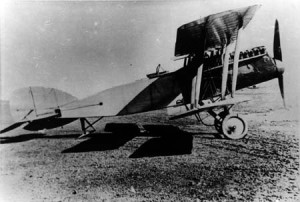 None of these so-called battleplanes qualified as fighters, although they were the first concerted attempt by the industry in the US to arm airplanes. In 1916 a new type made its appearance which some consider the real predecessor of America’s fighter planes: the Speed Scout. These small single-seat unarmed machines were lightly built, which even with the small engines available gave them a top speed that supposedly made them suitable for military use. Nearly every designer claimed a machine gun could be readily mounted, though not one had ever made such an installation. Because synchronizer technology was unavailable, guns could only have been located outside the propeller arc, while installation of other military equipment would probably have overloaded the planes, markedly reducing their only attribute, speed.
None of these so-called battleplanes qualified as fighters, although they were the first concerted attempt by the industry in the US to arm airplanes. In 1916 a new type made its appearance which some consider the real predecessor of America’s fighter planes: the Speed Scout. These small single-seat unarmed machines were lightly built, which even with the small engines available gave them a top speed that supposedly made them suitable for military use. Nearly every designer claimed a machine gun could be readily mounted, though not one had ever made such an installation. Because synchronizer technology was unavailable, guns could only have been located outside the propeller arc, while installation of other military equipment would probably have overloaded the planes, markedly reducing their only attribute, speed.
Mock attacks on Army fields in 1916 revealed the need for armed high-speed planes to “pursue” and attack an enemy, the first impetus the Army had to develop an armed fighter, though there was no aggressor with that desire or capability. Late that year the Air Service received its first appropriation large enough to purchase more than trainers or observation planes, and ordered a small number of unarmed speed scouts for evaluation, consistently calling them ‘pursuits.’ Had production contracts followed, armament would presumably have been fitted. One pursuit was ordered in October from Standard, four Sturtevant Bs and four Curtiss S-3s in November, and four Thomas Pursuits in January 1917.
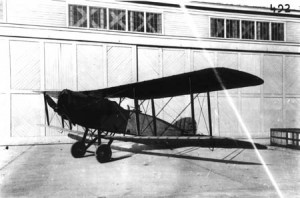 Virtually nothing is known of the Standard design, although it was a tractor biplane and may have become the company’s Model SS Speed Scout that was later advertised in mid-1917. The order was canceled before delivery. The Sturtevant B was an unconventional design by Grover Loening, a sesqui-plane with a large upper wing supported by a truss structure in which the lower wing of extremely narrow chord was the bottom member. Nearly all the framing was steel, the lower fuselage being of V cross section and the short tail surfaces sharply swept back.
Virtually nothing is known of the Standard design, although it was a tractor biplane and may have become the company’s Model SS Speed Scout that was later advertised in mid-1917. The order was canceled before delivery. The Sturtevant B was an unconventional design by Grover Loening, a sesqui-plane with a large upper wing supported by a truss structure in which the lower wing of extremely narrow chord was the bottom member. Nearly all the framing was steel, the lower fuselage being of V cross section and the short tail surfaces sharply swept back.
By themselves these experimental features were enough to ensure problems. The engine was a 15Ohp Sturtevant A-5 cooled by two radiators mounted laterally under the top wing. The first B was the only pursuit completed by the four manufacturers before the country entered the war and was flown on 20 March 1917. However, the pilot could not control it and crashed into a tree in attempting to return to the ground, destroying the machine. The Air Service canceled the other three.
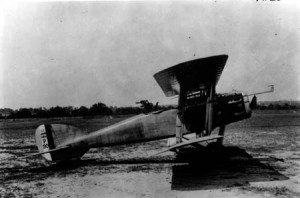 The Curtiss S-3 was the Army’s first triplane and evolved from the civilian S-1 and S-2 biplane designs. One unusual feature was the arrangement of the interplane struts, an X with a vertical member added in front, the whole assembly then covered with fabric. It was powered by the 9Ohp Curtiss 0X-2 with a circular nose radiator cooled by air passing through a large prop spinner, but was otherwise of conventional wood and fabric construction. After the declaration of war in April 1917, the design had a low priority and was not delivered until July, by which time European fighters were planned and the S-3 pursuit was obsolete. To salvage the design, Curtiss proposed it be used as an advanced trainer, but better machines were selected. The four were flown briefly at Langley and McCook Fields before being scrapped in early 1918. They had been completed only because construction was well advanced when their obsolescence was recognized.
The Curtiss S-3 was the Army’s first triplane and evolved from the civilian S-1 and S-2 biplane designs. One unusual feature was the arrangement of the interplane struts, an X with a vertical member added in front, the whole assembly then covered with fabric. It was powered by the 9Ohp Curtiss 0X-2 with a circular nose radiator cooled by air passing through a large prop spinner, but was otherwise of conventional wood and fabric construction. After the declaration of war in April 1917, the design had a low priority and was not delivered until July, by which time European fighters were planned and the S-3 pursuit was obsolete. To salvage the design, Curtiss proposed it be used as an advanced trainer, but better machines were selected. The four were flown briefly at Langley and McCook Fields before being scrapped in early 1918. They had been completed only because construction was well advanced when their obsolescence was recognized.
The four Thomas-Morse Pursuits ordered in January were to have the Thomas 88 engine of 150hp and reach 105mph. They were also conventional biplanes; but after hostilities began, delivery was so delayed by higher priority work that the Air Service finally cancelled the contract in mid-1917.
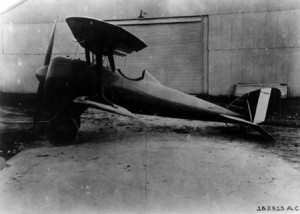 The Army’s last prewar order for speed scouts was for 12 Curtiss S-6 Pursuits placed in March 1917. The type was an improved S-3 with revised tail surfaces, the pilot moved to the rear, and a 100hp OXX-3 engine installed for improved performance. It was the only speed scout ordered with armament installed by the manufacturer; at the time, the dozen amounted to a production order. Once war began, priority of JN-4A production delayed delivery of the first pursuit for many months. Completed late in 1917, two ground-type Lewis machine guns complete with water-jackets were mounted at the factory on the cabane struts to fire over the top of the propeller, reflecting the archaic level of American technology when the contract was placed. In that position it was impossible to replace ammunition drums or clear jams. The first machine was delivered in December to McCook Field where it was briefly tested to ensure compliance with the contract. Its performance led to immediate cancellation of the remaining 11 on order, and the plane was destroyed in an accident the following month.
The Army’s last prewar order for speed scouts was for 12 Curtiss S-6 Pursuits placed in March 1917. The type was an improved S-3 with revised tail surfaces, the pilot moved to the rear, and a 100hp OXX-3 engine installed for improved performance. It was the only speed scout ordered with armament installed by the manufacturer; at the time, the dozen amounted to a production order. Once war began, priority of JN-4A production delayed delivery of the first pursuit for many months. Completed late in 1917, two ground-type Lewis machine guns complete with water-jackets were mounted at the factory on the cabane struts to fire over the top of the propeller, reflecting the archaic level of American technology when the contract was placed. In that position it was impossible to replace ammunition drums or clear jams. The first machine was delivered in December to McCook Field where it was briefly tested to ensure compliance with the contract. Its performance led to immediate cancellation of the remaining 11 on order, and the plane was destroyed in an accident the following month.
To summarize the Army’s experience with the speed scout to April 1917 when America declared war: the Air Service had ordered 13 unarmed planes from four manufacturers for evaluation as pursuits, and another 12 with twin Lewis guns; but only one Sturtevant B without armament had been completed and had crashed before delivery. During the war, only five of the 25 were finally delivered, all by Curtiss, but they were obsolete in comparison with types in use in France. They were of no interest when received, considered more as nuisances than usable airplanes. They had been ordered when the Air Service was still struggling to determine its requirements for an armed pursuit, and not one of the models was capable of development into a fighter comparable to those in use in Europe.
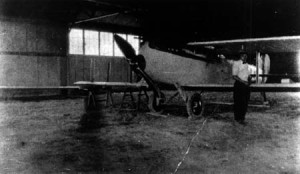 When the country declared war on 6 April 1917, the development of the fighter in the Air Service can be summed up very simply: it had not begun! Airframe design had just been initiated in the form of speed scout, the Army had yet to receive the first of the type, no practical machine gun installation had been developed in the country, the design of a synchronizer had not even been attempted, and available engines were not suited for powering fighters with the performance necessary for European combat.
When the country declared war on 6 April 1917, the development of the fighter in the Air Service can be summed up very simply: it had not begun! Airframe design had just been initiated in the form of speed scout, the Army had yet to receive the first of the type, no practical machine gun installation had been developed in the country, the design of a synchronizer had not even been attempted, and available engines were not suited for powering fighters with the performance necessary for European combat.
Although the country was to be at war for 19 months, much less time was available in which to build planes- and time was one of the significant factors that prevented supplying a fighter overseas. Two months elapsed before the US even agreed, as a result of the Ribot cable of 23 May 1917, to furnish a combat air force in Europe; Congress did not fund the huge program until 24 July. With no experience in designing combat planes, the decision was made to initially build only European types, and selection by the Boiling Aeronautical Mission took until 15 August. Sample airframes were not received until late September.
By that time, only 13 months remained in which to redesign them for production with American engines and deliver them to the AEF, far from the 19 months usually cited.
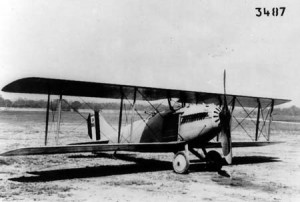 The reason for substituting US engines has been misunderstood since the war, and has often been badly misrepresented. The basic fact is that the only way in which thousands of combat planes could be built in the planned time frame was by using an engine designed around American manufacturing practices and built by the only industry with the production capacity, the automotive industry. Curtiss was easily the country’s largest manufacturer of engines when the US entered the war, but its production capacity fell so far short of demand for the OX-5 which it was already building that hundreds of JN-4As and -Ds had to be shipped without powerplants! Manufacturing foreign fighters was completely dependent on delivery of thousands of suitable engines, and only the Liberty could be available in the short term for use in these machines until foreign powerplants could be delivered in quantity. A number of American fighters were designed around engines which were not even being manufactured in the country, ensuring their fate.
The reason for substituting US engines has been misunderstood since the war, and has often been badly misrepresented. The basic fact is that the only way in which thousands of combat planes could be built in the planned time frame was by using an engine designed around American manufacturing practices and built by the only industry with the production capacity, the automotive industry. Curtiss was easily the country’s largest manufacturer of engines when the US entered the war, but its production capacity fell so far short of demand for the OX-5 which it was already building that hundreds of JN-4As and -Ds had to be shipped without powerplants! Manufacturing foreign fighters was completely dependent on delivery of thousands of suitable engines, and only the Liberty could be available in the short term for use in these machines until foreign powerplants could be delivered in quantity. A number of American fighters were designed around engines which were not even being manufactured in the country, ensuring their fate.
One of the least understood aspects of building foreign machines in the US was the necessity for making all new drawings. There were many probable reasons that those received could not be used directly: these copies were probably blueprints and needed to be kept as reference drawings, not issued to a factory where they would be rapidly destroyed by usage: many sets of prints were necessary in even a single factory: those received were undoubtedly opaque prints (blueprints could not be easily reproduced in 1917) and had to be converted J.0 drawings on translucent paper for reproduction; the dimensions were in metric units which no US manufacturers used; few if any sets of drawings covered every part required in assembling a plane, so many missing drawings had to be added to those received; new drawings for the installation of US engines had to be made, etc. It was impossible simply to take an incomplete set of prints from overseas and begin building planes to them, and the re-drawing effort usually took another several months, leaving less than a year in which to build and deliver machines in quantity before the Armistice.
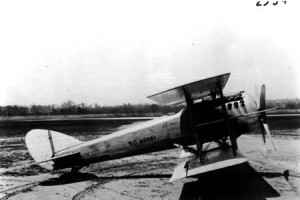 While these events were taking place, US companies continued to develop single-seat designs, many of which were evaluated by the Air Service. These will be covered after tracing the main effort, production of foreign designs.
While these events were taking place, US companies continued to develop single-seat designs, many of which were evaluated by the Air Service. These will be covered after tracing the main effort, production of foreign designs.
The Boiling mission recommended only two fighters: the Spad XIII with the 200hp Hispano-Suiza geared engine: and a promising Spad monocoque with a 15Ohp Gnome rotary motor whose prototype was about to be tested. Within six weeks, the latter plane proved unsuccessful and only the Type XIII remained in the program. On 18 September 1917 three Spads arrived at the Curtiss plant in Buffalo, followed four days later by engineer Etienne Dormoy from the French factory, who was to redesign the fighter for the 8-cylinder Liberty engine because Hispano-Suiza deliveries could not begin for many months. Engineering had barely begun when it became clear too many changes were necessary with the Liberty, and the engine reverted to the geared 200hp Hispano-Suiza to be built by Wright-Martin. Initial orders in October were for Curtiss to build 3,000 Spads, but this was reduced in early November to a more practical 1,500, scheduled for delivery by 30 June 1918.
However, information received in the US over the next few weeks created indecision and ultimately killed the program. The military had long before recognized that it had to rely on the Allies for technical guidance, and this direction came primarily through the AEF, which was in direct contact with French and British authorities. Cables from overseas suddenly indicated that the geared Hispano was unreliable and that the single-seat fighter would be obsolete by mid-1918. The latter conclusion was one of many received from the Allies which were completely wrong and on which neither the French nor British based their own programs! This momentary misdirection, coupled with the improbability of rapid manufacture of a suitable engine, led to stopping work on the Spad in November.
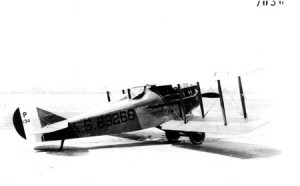 Before work could resume, the program died completely after a December 15th cable directed the US to leave to France and England single-seat fighter production for the AEF. This recommendation was based on a commitment obtained earlier from France that its factories could build thousands of fighters for the American Air Service, if the US furnished the raw materials. Within months, this unrealistic promise from the French fell to pieces, but it had caused the cancellation of Spad production, and in fact any chance of delivering a foreign design before the Armistice, only 11 months away when the above cable arrived.
Before work could resume, the program died completely after a December 15th cable directed the US to leave to France and England single-seat fighter production for the AEF. This recommendation was based on a commitment obtained earlier from France that its factories could build thousands of fighters for the American Air Service, if the US furnished the raw materials. Within months, this unrealistic promise from the French fell to pieces, but it had caused the cancellation of Spad production, and in fact any chance of delivering a foreign design before the Armistice, only 11 months away when the above cable arrived.
The most obscure single-seater ordered in the US was the Martinsyde. When VE Clark returned from the Boiling mission in the fall of 1917, he suddenly recommended (in addition the Spad) production of the new Martinsyde F3, the prototype of which in England had just demonstrated a very high performance. An order was placed for 1500 in October, but no work was done because British authorities attributed the plane’s performance to its Rolls-Royce Falcon engine and felt it could not be successfully adapted to an American power plant. It had been determined earlier that quantity production of Rolls-Royce engines in the United States was impossible. The Martinsyde contract was canceled within weeks after it was placed.
The US fighter program continued to be guided by the AEF, which shortly completely reversed itself, becoming its own worst enemy through a series of unbelievably contradictory directives. In early February, a cable arrived from General Foulois in Europe disclosing that the French could deliver only a few planes instead of the thousands promised; and on the 10th, the AEF recommended 1,000 Spads now be built in the US! American authorities spent two months resolving by cable the confusion this reversal created, and the matter appeared to be settled by the AEF in late April when it recommended, instead, that the SE5 be built, primarily because the British could now supply several hundred airframes for American use in France.
This was the beginning of the SE5 program in the US, only six months before the war ended. As a result, negotiations for 1,000 were initiated with Curtiss. When the US advised the AEF that the 180hp Hispano-Suiza would be used (the geared 200hp model had been canceled earlier at AEF behest), it received a return cable in May which disapproved SE5 production because the AEF now believed all necessary fighter airframes could be obtained in Europe. On 15 May the Director of Aircraft Production ended the nonsense by notifying the service in France that the Air Division in the US had just requested 1,000 SE5s with 180hp Hispano engines for training, and an order was signed with Curtiss on 8 June 1918. This action, five months before the Armistice, ended any further discussion of the Spad or the planned production of any other foreign fighter designs for combat use in Europe. Through its own vacillation, the AEF was now completely dependent on fighters from England and France. Actually, no orders had been placed in the United States for production of foreign single-seat combat fighters after cancellation of the Spad contract in November 1917, though most people today believe the SE5 trainers from Curtiss were intended for combat service in Europe.
A brief look at attempted production of the British machine provides some insight into the difficulties that might have occurred had Spad XIII production continued in 1917. Anticipating an order, a British SE5a tested in early 1918 at McCook Field was shipped to Curtiss in early May, along with the mixed batch of incomplete SE5 and SE5a drawings which the US had. At the same time, a request was made to England for 3 SE5s as production samples, and 50 engineless airframes for assembly, until Curtiss could begin deliveries of new machines. Additional drawings arrived early in July, and a week later four SE5s reached New York City, two of which were sent to Curtiss to assist in preparation of final drawings.
The first Curtiss-built plane was delivered in record time in early August, but the engine overheated during its official test on the 20th. Most combat planes built in the United States in World War I had this problem because there had been no demand before 1918 for high-performance cooling units of small frontal area, and the industry had never developed the technology. The SE5 cooling surfaces were extended, and further tests conducted in September, leading to release of the plane for production on 2 October. Five weeks later, the war and the contract ended with only the one plane delivered during the short six months program. Later, Curtiss assembled the British airframes using American engines; and these machines, with others brought from overseas, became standard US fighter equipment for a short time.
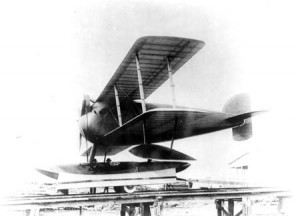 The only other foreign type requiring discussion is the American Bristol Fighter. However, in spite of its name, the plane was never in the American program as a fighter! The Boiling mission selected it as an observation plane based on its anticipated performance with the 200hp geared Hispano-Suiza engine in England, rather than the reconnaissance-fighter model with the Rolls-Royce Falcon. When redesign began in late 1917, only the large Liberty 12-cylinder engine was potentially available in the numbers necessary, so it was used with the concept that it would be operated at part throttle during observation work, but could give the plane a burst of speed if attacked. The plane was assigned the designation USAO-1 corresponding to this role.
The only other foreign type requiring discussion is the American Bristol Fighter. However, in spite of its name, the plane was never in the American program as a fighter! The Boiling mission selected it as an observation plane based on its anticipated performance with the 200hp geared Hispano-Suiza engine in England, rather than the reconnaissance-fighter model with the Rolls-Royce Falcon. When redesign began in late 1917, only the large Liberty 12-cylinder engine was potentially available in the numbers necessary, so it was used with the concept that it would be operated at part throttle during observation work, but could give the plane a burst of speed if attacked. The plane was assigned the designation USAO-1 corresponding to this role.
Both the company and the Signal Corps became uncomfortable with the design, and Curtiss built the first plane at a snail’s pace, delivering it on 2 March 1918, followed by a second machine six weeks later. Company testing was also a slow process, and many detail changes were made as deliveries slowly continued; but test results were unsatisfactory. Col EJ Hall, who was in charge of the program, insisted on converting the plane to a two-seat fighter, while the AEF required an additional 525 lbs of equipment be added to make it a multipurpose observation machine, reducing performance. This tug-of-war caused further problems, but 13 planes were delivered in May and flight performance improved. Early that month, one crashed after fabric tore loose from the upper wing; and in early June, the same thing happened because the company pilot ignored obvious signs of fabric failure, killing himself, his passenger, and ultimately the program.
An investigating committee recommended cancellation of the USAO-1, in spite of the fact that fabric failure had now been completely solved, no other significant problems with the plane existed, and it was urgently needed in France. Most accounts today state the Liberty was too heavy for the plane, but the main airframe had been completely re-stressed during its redesign and it never suffered a structural failure. The reasons given for canceling the USAO-1 lacked factual support, the underlying causes probably being the delays that had occurred, many of which were caused by Curtiss, the bad publicity, and the existence of the USB-1 as a substitute.
The USB-1 with the 300hp Hispano-Suiza was begun as a trainer version of the USAO-1 before the first observation machine had even flown. A prototype was completed in April, 1918, but because production powerplants would not be available in quantity until early 1919, the USB-2 with the 290hp Liberty 8 was developed in parallel for early production. After the cancellation of the USAO-1, the two new models replaced it in the program as combat planes.
The early unreliable Hispano in the USB-1 prototype caused testing delays, and the country was unable to obtain an airframe from England for the USB-2 until June. As evaluation of the prototypes began, production drawings were prepared by the Engineering Division at McCook Field, but vibration of the Liberty in the USB-2 caused it to be dropped from further consideration. Three prototypes of the USB-1 were ordered from Curtiss in October, with 2,000 production machines in November just as the war ended. The unavailability of the 300hp Hispano until early 1919 prevented timely USB-1 production (only 8 engines had been completed at the Armistice).
A further improved Bristol was the XB-1 with the same 300hp Hispano and a new veneer fuselage whose development began in the spring of 1918. A prototype was being assembled at the Armistice, but was not completed, as the XB-1A, until July of 1919.These successors to the USAO-1, all observation types, were started seven months or less before the war’s end; there was no possibility of testing prototypes and placing them in production in that short time.
While many different designs were developed in the United States during the war, only the Lepere LUSAC-11 was ordered into production. Because no American firm had the necessary experience, Frenchman Georges Lepere had been brought to the US in December 1917 to design combat planes; a series of two-seat fighters was among these. He arrived late, only 11 months before fighting stopped, because he had only become available that fall, and two months had been wasted before the US decided to hire him. All his designs were built by Packard Motor Car Company at Detroit, MI. The LUSAC-11 used the 400hp Liberty with its radiator in the center section of the upper wing, and was armed with two synchronized Marl in machine guns mounted on the right side of the fuselage and two Lewis guns on a Scarff ring for the observer. Shortly the first of six prototypes flew on 15 May, and WC Potter, director of aircraft production, was so confident of their success he ordered 25 more be built before testing had even been completed.
While the airframe was strong and the design sound, it suffered from a poor radiator which constantly developed leaks; and it had a non-standard carburetor location the Air Service would not accept.
Because of these difficulties, McCook Field did not receive one of the planes until late July, and following evaluation there, Vincent recommended a nose radiator be fitted, the carburetors be placed in the standard Liberty position, and the guns be moved to the upper cowl.
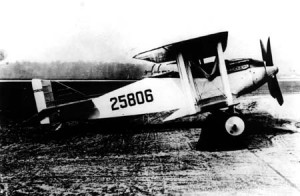 Prototype testing was delayed by radiator leaks and fuel starvation during climbing, and only 11 planes were delivered by the Armistice. At one time, these were so scattered that only a single machine was available for manufacturer’s test flights, further interfering with the program. One was supplied to France and two were shipped to the AEF in September for evaluation, where they were first flown in early November, the tests identifying the same shortcomings as in the US: radiator leaks and the troublesome fuel feed system. At the war’s end, all 3,500 production machines were canceled and the redesign to meet Vincent’s recommendations was only partly completed in the next few months. The 6 experimental and 25 pre-production planes were delivered, most in early 1919.
Prototype testing was delayed by radiator leaks and fuel starvation during climbing, and only 11 planes were delivered by the Armistice. At one time, these were so scattered that only a single machine was available for manufacturer’s test flights, further interfering with the program. One was supplied to France and two were shipped to the AEF in September for evaluation, where they were first flown in early November, the tests identifying the same shortcomings as in the US: radiator leaks and the troublesome fuel feed system. At the war’s end, all 3,500 production machines were canceled and the redesign to meet Vincent’s recommendations was only partly completed in the next few months. The 6 experimental and 25 pre-production planes were delivered, most in early 1919.
It is clear even an experienced European engineer could not produce a design free of problems and avoid the development time required to eliminate them. Even had no difficulties occurred, the fighter could not have reached production by November 1918, only five months after its maiden flight. Its problems were typical of most combat designs developed in Europe, where only a few of the many tested were built in large numbers. But in America the LUSAC-11 was the only two-seat fighter ordered into production; and had the war continued, might have proved its worth. The machine sold to France has survived and is now on display in the US Air Force Museum at Dayton, OH.
The basic airframe was also fitted with the 16-cylinder Bugatti engine built in America and was designated the LUSAC-21, but this motor was a failure and never developed its planned 5OOhp, so it was hopelessly overweight. The prototype LUSAC-21 was repeatedly delayed awaiting a reliable flight engine, and flew just as the war ended. It was never considered for production, and a third version with a geared Liberty was not built because that engine was also a failure.
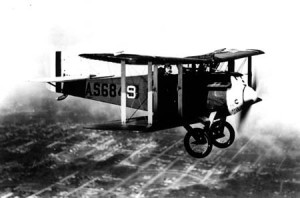 Although the Standard M-Defense/E-1 and the Thomas-Morse S-4B/C were manufactured in quantity- and the Standard model was initially identified as a ‘military defense’ type- both were light speed-scouts suitable only for use as advance trainers and were never considered by the Army as fighters.
Although the Standard M-Defense/E-1 and the Thomas-Morse S-4B/C were manufactured in quantity- and the Standard model was initially identified as a ‘military defense’ type- both were light speed-scouts suitable only for use as advance trainers and were never considered by the Army as fighters.
Quite a number of experimental fighters were designed in the United States during the war, but only two conceived very late, the Thomas-Morse MB-3 and Ordnance Engineering D, had real merit; prototypes were not delivered until 1919, so they will be covered last. Most of the others were 1918 designs, conceived far too late to enter production, and virtually all were unsuccessful.
However, many are viewed today as good fighter designs when in fact they had only one or two of the required characteristics, and lacked most of the others. Most are considered successful fighters based solely on their speed, without even considering whether they had the necessary structural strength, a reliable engine, suitable armament, adequate visibility from the pilot’s cockpit, proper balance, etc. Even if these requirements had been met, several models used engines that had not been ordered in quantity, eliminating them from any possible consideration. Further, because detail designing, prototype construction, flight testing, and modifications to correct problems could each take two to four months depending on the difficulties encountered, no design initiated as late as January 1918 could possibly have entered production during the war, let alone reach combat in France. Contrary to popular misconceptions, many of these prototypes were not delivered until 1919.
Albert S Heinrich’s first wartime model, his C-l Pursuit, was among the earliest; two were ordered with serial numbers 539 and 540 just days after war was declared. Powered by a 100hp Gnome, they were a very clean advanced design, but lightly built and unarmed. The C-l was a speed scout in concept, ordered at a time when little was known of combat requirements in Europe; and only one was flown at Langley Field, VA. Even if it had been capable of development into an armed fighter, its Gnome engine fell into disfavor in late 1917, and the plane would not have been considered for service.
However, because the C-l airframe was so impressive, four similar planes were ordered by McCook Field in January 1918 with minor airframe alterations, two as advance trainers with 80hp Le Rhone engines and two as pursuits with 160hp Gnomes. The first trainer was delivered in July, but was not to be flown until a second could be structurally tested in August. Because the Gnome was not being built in the US, the two fighter airframes were delivered without engines. None of the four was ever flown, and even if the pursuits had been successful, no alternate rotary engine was in production.
Heinrich learned from this experience, and his last design was the Victor D-8 single-seat fighter to use the 290hp Liberty 8-cylinder power plant just entering production; his design was to have two Browning guns. He submitted a proposal in August 1918, but the Air Service required design changes which took him several months to complete. A contract for three prototypes was awarded just three weeks before the war ended, and the order was then canceled.
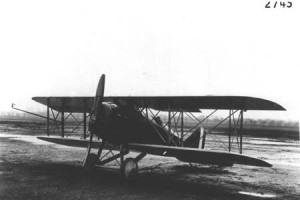 In December 1917 Col Virginius Clark at McCook Field initiated a fighter built by Ordnance Engineering Corporation, which was to have one of the weirder gun installations of the war. This plane has been reported as designed by Etienne Dormoy from the Spad company, and it did resemble the French machine. Equipped with a 160hp Gnome rotary, it was known as the company’s Model B. Clark conceived the armament, to consist of a number of unsynchronized Italian Revelli machine guns mounted under the wings outside the propeller arc. A few of these guns were built during the spring and summer, but proved so unreliable they were never installed on the planes. Though the fighter reputedly had a high performance, it was also a victim of its engine, which was not in production, so only one or two airframes were delivered in mid-1918 as the 8; and the rest of the six ordered were completed as the Model C trainer with an 80hp Le Rhone. Between the choice of engines and the experimental guns with their unconventional installation, the design was doomed from the start.
In December 1917 Col Virginius Clark at McCook Field initiated a fighter built by Ordnance Engineering Corporation, which was to have one of the weirder gun installations of the war. This plane has been reported as designed by Etienne Dormoy from the Spad company, and it did resemble the French machine. Equipped with a 160hp Gnome rotary, it was known as the company’s Model B. Clark conceived the armament, to consist of a number of unsynchronized Italian Revelli machine guns mounted under the wings outside the propeller arc. A few of these guns were built during the spring and summer, but proved so unreliable they were never installed on the planes. Though the fighter reputedly had a high performance, it was also a victim of its engine, which was not in production, so only one or two airframes were delivered in mid-1918 as the 8; and the rest of the six ordered were completed as the Model C trainer with an 80hp Le Rhone. Between the choice of engines and the experimental guns with their unconventional installation, the design was doomed from the start.
In December 1917 the Shiefer & Sons company of San Diego, CA, completed a speed scout as a private venture designed by NB Robbins. Although reasonably well designed and called a scout, it was just another unarmed flying machine with little potential for military use. It was a conventional single-seat biplane equipped with a 1OOhp Gnome engine, a round fuselage shaped by many formers, and it had a good performance. The Army field at San Diego was somehow induced to buy it in January 1918, and it was flown there during the rest of the year. However, no request was made for it to be officially evaluated at McCook Field, necessary before the type could be considered for any useful purpose. For this reason, the Robbins Scout was never a candidate for anything.
In 1917, Maurice Berckmans had built a speed scout flown for some time in the Long Island area. In January 1918 he was able to influence Dr William F Durand of the National Advisory Committee on Aeronautics to request Mr. Potter, in charge of aircraft production, to consider his designs; and Berckmans’ proposal for a single-seat biplane was evaluated at McCook Field, where significant deficiencies were found. However, Col Jesse Vincent, in charge of the field, believed the NACA involvement necessitated further cooperation, and suggested the designer prepare for evaluation of his design abilities a fighter proposal using the Liberty 8-cylinder engine. Instead, Berckmans submitted his B-2 design using the Liberty 12, which the Air Service considered too heavy for a single-seat fighter with two machine guns; he claimed a maximum speed of 148mph. His price of $175,000 for three planes was exorbitant, so his proposal was rejected in July.
Undaunted, Berckmans continued contacting other high officials, including the Secretary of War, and this pressure led the Air Service to ask the AEF if a fighter with a 400hp Liberty was desired, assuming the answer would be an emphatic “No.” The affirmative reply was a surprise, and an order for four Berckmans B-3s was reluctantly issued in October, canceled three weeks later at the Armistice. The Air Service never wanted either design, and the events illustrate what could happen when well-meaning officials became involved in decisions better left to those who were technically competent.
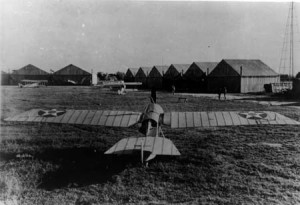 In the spring of 1918 as the first USAO-1 Bristol Fighters were being built by Curtiss at Buffalo, the company and Col EJ Hall, in charge of the program, believed the observation machine could be improved; and he decided to redesign it as a two-seat fighter. By so doing. Hall was, without authority, intending to eliminate the observation plane needed by the AEF and substitute an entirely different type, a baffling decision. The prototype, which the company called the Curtiss Battler, was completed in June. It had a sleek veneer-covered fuselage, but the radiators were crudely mounted under the upper wing. The machine had major defects, the most obvious caused by lowering the upper wing to the top of the fuselage and raising the lower surface to attach to the bottom longeron. The small gap that resulted would cause aerodynamic interference between the wings, while the upper surface blocked the pilot’s view downward and forward during combat and landings. Because of the poor visibility, the machine was condemned by the company, the Air Service, and foreign pilots. The prototype crashed after only a few hours’ flying time, and the Air Service would not authorize construction of any others.
In the spring of 1918 as the first USAO-1 Bristol Fighters were being built by Curtiss at Buffalo, the company and Col EJ Hall, in charge of the program, believed the observation machine could be improved; and he decided to redesign it as a two-seat fighter. By so doing. Hall was, without authority, intending to eliminate the observation plane needed by the AEF and substitute an entirely different type, a baffling decision. The prototype, which the company called the Curtiss Battler, was completed in June. It had a sleek veneer-covered fuselage, but the radiators were crudely mounted under the upper wing. The machine had major defects, the most obvious caused by lowering the upper wing to the top of the fuselage and raising the lower surface to attach to the bottom longeron. The small gap that resulted would cause aerodynamic interference between the wings, while the upper surface blocked the pilot’s view downward and forward during combat and landings. Because of the poor visibility, the machine was condemned by the company, the Air Service, and foreign pilots. The prototype crashed after only a few hours’ flying time, and the Air Service would not authorize construction of any others.
The Curtiss Engineering Corporation at Garden City, NY, developed two other two-seat fighters, the model 18T triplane and 18B biplane. They differed only in their wing arrangement, and their common streamlined fuselage was veneer-covered and equipped with the experimental Curtiss-Kirkham K-12 engine which was anticipated to develop 400hp, twin synchronized Marl in guns, and two Lewis guns for the observer. Charles B Kirkham had designed the engine in 1917, and the company let him engineer the Model 18 around his power plant. In March 1918 the US Navy ordered two of the triplanes, the first of which was tested early that summer and reached phenomenal speeds over 160mph when lightly loaded. But visibility for the pilot was poor because of the mid-wing location just below and forward of his position. Apparently unaware of this shortcoming, WC Potter, in charge of aircraft production, was impressed, and he directed that two triplanes and two biplanes be ordered without an evaluation by his Engineering Division.
When contacted, the company, unbelievably, would not accept Air Service requirements, and prolonged negotiations for four months until the Army reluctantly agreed to accept the company’s specifications in August, an omen of future trouble. Meanwhile, the Navy had lost interest, apparently because of the limited visibility, and loaned its triplane to McCook Field where it was demonstrated in that same month, the engine overheating badly. For some time Curtiss would not provide a delivery date for the Army’s four, probably because the K-12 engine continued to fail its tests; and when dates were provided, they were not met. By the time of the Armistice the Air Service concluded the planes had no military value, but wanted them delivered to evaluate the new engine, so the contract was continued. The first triplane reached McCook Field in January,. 1919, and the second shortly after where one failed its structural test and the other was never assembled. The pair of 18Bs was at last delivered in June, but only one was flown, crashing a month later after its engine failed.
Although the Navy had some success with its triplanes as postwar racers, utilizing the machines’ only positive attribute, speed, the Type 18 was not built to Army specifications, had failed its structural test, and had an unreliable engine with undersized radiators. Like several other wartime designs, the 18s were a private venture, intended to gain production contracts for the unproven K-12 engine, but lacked several key military requirements and were never considered fighter candidates by the Army. Kirkham was a powerplant engineer and had little airplane design background, probably relying for guidance on those around him at the Garden City plant.
By early 1918, Grover Loening had formed his own company. At the time, Wright-Martin was beginning production of the new 3OOhp Hispano-Suiza engine, and contracted with Loening to design and build two high-performance planes to demonstrate the engine’s capabilities. It is not known why the company considered this necessary when it already had huge production contracts for the Hispano. Loening delivered two unconventional high-wing monoplanes, his M-8, with the radiator in a tunnel under the engine, an advanced feature that became a standard arrangement for decades. The first was flown in August 1918, and the company continued to operate it until the Armistice. Wright-Martin then had no further need for the plane, and Army interest led the firm to consign the second machine to McCook Field a few days later for trials; both were purchased by the Air Service from Wright-Martin shortly after. Their evaluation with structural and flight tests extended into late 1919, revealing that the wide-chord wing blocked the pilot’s view during landing and taxiing, eliminating it from further consideration. Contrary to virtually every published account, this private venture was not built for the Army, whose first contact with the plane was after the Armistice. The widely quoted tale that either 3,000 or 5,000 were ordered during the war makes colorful reading, but is pure fiction. The Navy did purchase a moderate number of later models in the next few years.
 In late 1917, the Pomilio brothers whose factory in Italy was manufacturing planes for the Italian air force approached the US about building planes in America. It was not until May 1918 that their inquiries led to formal discussions ,and the design team headed by Ottorino Pomilio did not arrive until August, far too late to have even gotten a design into production in 1919. Locating in Indianapolis, IN, they obtained a contract in September 1918 for six FVL-8 fighters powered by the 290hp 8-cylinder Liberty which would give them a planned speed of 140mph. The type had several unusual features, including an all-veneer fuselage suspended between the wings, a bulbous nose, a 4-bladed prop and very slender inter wing struts. After the Armistice the firm was in poor financial condition, but managed to deliver the prototypes beginning in mid-1919 when they were of no interest because the designers were returning to Italy. The machines were given a superficial evaluation and scrapped.
In late 1917, the Pomilio brothers whose factory in Italy was manufacturing planes for the Italian air force approached the US about building planes in America. It was not until May 1918 that their inquiries led to formal discussions ,and the design team headed by Ottorino Pomilio did not arrive until August, far too late to have even gotten a design into production in 1919. Locating in Indianapolis, IN, they obtained a contract in September 1918 for six FVL-8 fighters powered by the 290hp 8-cylinder Liberty which would give them a planned speed of 140mph. The type had several unusual features, including an all-veneer fuselage suspended between the wings, a bulbous nose, a 4-bladed prop and very slender inter wing struts. After the Armistice the firm was in poor financial condition, but managed to deliver the prototypes beginning in mid-1919 when they were of no interest because the designers were returning to Italy. The machines were given a superficial evaluation and scrapped.
One of the last fighters ordered during the war was the Vought VE-8, a single-seat biplane with the 300hp Hispano-Suiza and twin synchronized Browning machine guns, externally resembling the Spad fighters. Although negotiations began in May 1918. the company spent months developing a proposal; it was October before the Army could place a contract for four. After the war’s end, fabrication was extremely slow, and the first was six months late when delivered in mid-1919. The VE-8 had major control problems, and testing continued into 1920 when the model was dropped from further consideration.
During the war, the Navy relied almost entirely on the Army for land-based combat planes, primarily the DH-4, but did contract with Curtiss in December 1917 to build a seaplane fighter that proved unsuccessful. It had a bulky fuselage designed around the 360hp Navy Liberty engine, an upper wing with dihedral attached to the top of the fuselage, a lower one with anhedral, a very tall rudder extending below the fuselage, and a single float with smaller units under each wingtip. It was actually designed by Captain BL Smith of the US Marine Corps (which may have been the reason it was not dropped after the prototype’s first flight). It was known as the “Dunkirk Fighter” because the optimistic Navy intended to use it in that area of France. Completed in late March 1918, the machine was laterally unstable and uncontrollable, being destroyed on its first flight. Two others were ordered, but the first caught fire in flight and was lost, while the second with redesigned wings was successfully flown. However, the war had ended and the Navy had no further use for the troublesome design.
The Thomas-Morse Aircraft Corporation of Ithaca, NY, and its predecessor had sold planes to the Army for a number of years. In November 1917 the Air Service ordered two MB-1s with the 400hp Liberty, not as fighters, but to evaluate their unusual parasol wing; the first two-seater crashed and the company substituted two MB-2 biplanes with the same engine. The design proved structurally weak and was dropped after the sand test.
In late September 1918, only six weeks before the war ended, the company received a contract for four MB-3 single-seat fighters. By this time, requirements for combat planes were better defined, a suitable engine (the 300hp Hispano-Suiza) was entering production, and American engineers were finally experienced enough to design a machine whose performance approached that of the aircraft in use in Europe. Because of progressive changes, the prototype MB-3s were delivered over many months in 1919, long after the war had ended. Though basically a sound design, testing and correction of design problems extended into 1920, and it was not until June of that year that a production order for 50 was given to Thomas-Morse. During their service life, their 300hp Hispano engines caused excessive vibration, but 200 more were subsequently ordered in 1921 from Boeing. While not an entirely satisfactory design, it did equip US fighter squadrons for a number of years.
The Ordnance Engineering Corporation Model D was a contemporary of the MB-3 using the same 300hp Hispano engine. Four prototypes were ordered just three weeks before the Armistice, and were delivered over an even greater period in 1919 than the Thomas- Morse model as problems with them were corrected. Testing and evaluation also extended into early 1920, when 50 production planes with modified wings were purchased in June, not from Ordnance, but from the Curtiss company. In service, the type was less satisfactory than the MB-3 and no further contracts were placed.
Although ordered during the final weeks of World War I, the MB-3 and the Ordnance D are better described as America’s first postwar fighter designs, because much of their engineering and refinements that later brought production contracts occurred in 1919 and 1920.
A few other models of World War I might be mentioned because they are sometimes viewed as quasi-fighters, though not one remotely resembled the real thing. Although no two circumstances were alike, they were misguided efforts by unqualified designers who believed their ideas were sound; but it is surprising that several could even have been considered practical, in spite of the fact that each of the four weird models actually flew. Several only reached heights that assured obliteration when they hit the ground.
Two weeks after the country entered the war, the Pigeon-Fraser Hollow Spar Company of Boston, MA, was somehow able to obtain an order from the Air Service for two single-place monoplane pursuits designed by George N Albree. They had 100hp Gnome rotary engines and a predicted speed of 95mph. Because of their odd features it is likely that they were just another attempt by the Signal Corps to evaluate an unusual design to see if it had any merit. The most impractical part of the machine was the tail assembly which had no elevators, its entire structure pivoting on a horizontal hinge just behind the cockpit to change the angle of the fixed stabilizer. Both planes were delivered to Langley Field in about September 1917, where the structural test of one indicated it was very weak; the second was flown briefly by a civilian pilot who, because controlling the machine was so difficult, only made gradual turns with shallow banks before crashing on landing.
The design was roundly condemned because of the impractical tail design which required very high control forces by the pilot; lack of lateral control; its zero visibility forward and downward; its generally poor construction; and the lack of provision for any military equipment. Later, Albree had another airframe built which is now displayed in Cole Palen’s museum at Rhinebeck, NY.
George Lanzius, an inventor originally from Holland, conceived pivoting each wing of a biplane around its main spar to change their angle of attack, and among other advantages, to lower the plane’s landing speed. This was not a new idea, but most others who tried this approach had pivoted the entire wing assembly as a unit. Probably because fixed wires could not be used in some areas where the shifting wings caused distances to vary, Lanzius’ design used an external horizontal truss above the upper and below the lower wings, which increased drag considerably.
In February 1918, shortly before flights of civilian planes were prohibited at Army bases, one of his designs was flown at Langley Field and crashed when the engine failed. However, Lanzius was able to get an audience with WC Potter, in charge of aircraft production, who was prone to order planes without an evaluation by his own engineering organization. In spite of objections by the Air Service, he directed that four speed scouts be built, and if they could exceed the world’s speed record, the Army would buy them. Ordered in April, they were fitted with the 400hp Liberty in deep fuselages, the wings fitted with the inventor’s external truss. Received at McCook Field in June, they were found structurally weak; the designer refused to allow a sand test, so the Army would not fly them. Company pilot LE Holt took one of the machines in the air on its first flight at the field in late June, where it shed its wings, killing the flier. The Air Service immediately rejected the other three and shipped them back to the designer.
The story of James V Martin and his Kitten is an example of how constant pressure and wild claims could sometimes result in the Army’s agreeing to test a plane with the full knowledge the design had no merit. A member of the Merchant Marine with no documented aeronautical training, a few days after the United States entered the war Martin was able to get an order for a large ‘cruising tractor1 with an unusual geared prop drive; when the plane was delivered to McCook Field in early 1918, Martin was hired to assist in evaluating the drive system. No other inventor received such treatment, and considering his lack of technical background the move is baffling. He resigned after a few months, but kept up a barrage of correspondence to officials proposing that the Air Service test a miniature biplane, his Kitten III powered by a 45hp ABC engine; he claimed it was a high-altitude fighter! The unarmed and unequipped plane with an unusual retractable landing gear was delivered to McCook Field in December 1918, after the war was over.
Months of discussion and correspondence ensued. Evaluation of the design at McCook indicated it was structurally weak and of no military value, but Martin would not allow the modifications the Air Service considered necessary to make it safe to fly,(24) so it was shipped back to him in 1919. Though never ordered or tested by the Army, the K-III was later flown by pilots hired by Martin. Several years later the Navy bought three somewhat similar float-equipped K-IVs for evaluation for use on submarines or small combat ships, but no further contracts developed.
The bizarre tale of the Christmas Bullet is both amusing and tragic. Dr William W Christmas designed several machines between 1908 and 1912, and became obsessed with the idea that wings should be flexible like those of a bird. In May 1918 he managed to get a letter sent by a New York Senator to Col Jesse G Vincent at McCook Field, describing his Scout single-seater biplane. Vincent, even though the machine met no military requirement, felt these circumstances made it necessary to loan an unneeded 200 hp 6-cylinder Liberty to Christmas to enable him to build the machine; but he stipulated that the engine was not to be flown until a structural test was completed at McCook Field; and the doctor agreed to this requirement.
In October Christmas notified McCook that he intended to fly the Scout, and the Army tried to make him comply with his agreement, refusing to let him use a military field. However, he ignored this and had two machines, now called the Bullet, flown in December 1918 and April 1919, both suffering wing failures on their first flight and killing their pilots. The designer had used materials that were not suitable, and the plane’s construction was not up to standard. Christmas’ wild claims included one that the Bullet would do 200mph, and another that before the war Germany had offered him one million dollars to “take over her air service development.” Unfortunately, he didn’t accept. The Army only became involved with him by trying to pacify a congressman , and was never interested in his machine for any purpose.
After the United States entered the war and reached the point in the fall of 1917 where it could place orders for airplanes, the 13 or so months remaining might have been ample to get foreign-designed fighters delivered to the American Expeditionary Force before the Armistice. At the time it was naively believed that the installation of US engines was a minor change to successful French fighter designs, and that production could take place rapidly once new engine installation drawings had been completed. However, the AEF threw this program into chaos by its constantly changing directions; and this left only domestic designs as possible candidates for delivery.
Many planes which were built in the United States in 1918 have been viewed as fighters because of their high speed or some other single qualification, but none met the multiple requirements necessary. The much-touted Curtiss 18T is the perfect example of this, with a speed in early flights of 163mph, far above that of combat planes in Europe. However, when fitted with radiators that only partly corrected its engine cooling problem, the speed immediately dropped 15mph. More important, it failed to meet requirements for pilot visibility, factors of safety, forward gun accessibility in flight, engine reliability, and other vital considerations, any one of which was enough for it to be rejected as a fighter.
Because of the inexperience of American designers, no potentially successful fighters were proposed until just weeks before the Armistice when the Thomas-Morse MB-3 and Orenco D prototypes were ordered. Then, even had the war continued through 1919, these two would not have been candidates for production because they could not have competed with the latest French and British designs. The United States could only have fielded a successful domestic fighter during its short involvement in the war if it had been able to keep pace with developments in Europe during the first three years of the conflict, and if it had poured the necessary money during those years into supporting an industry delivering competitive designs. America was still in the starting block when the race was over.
Bob Casari
Photos from author collection

